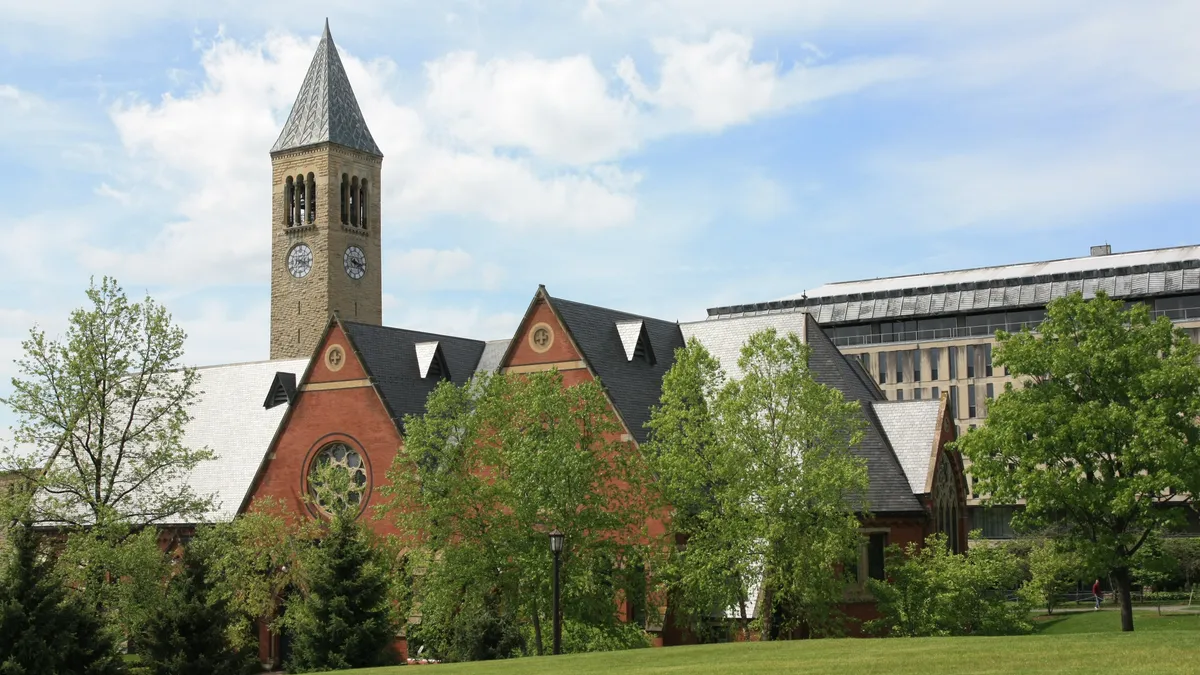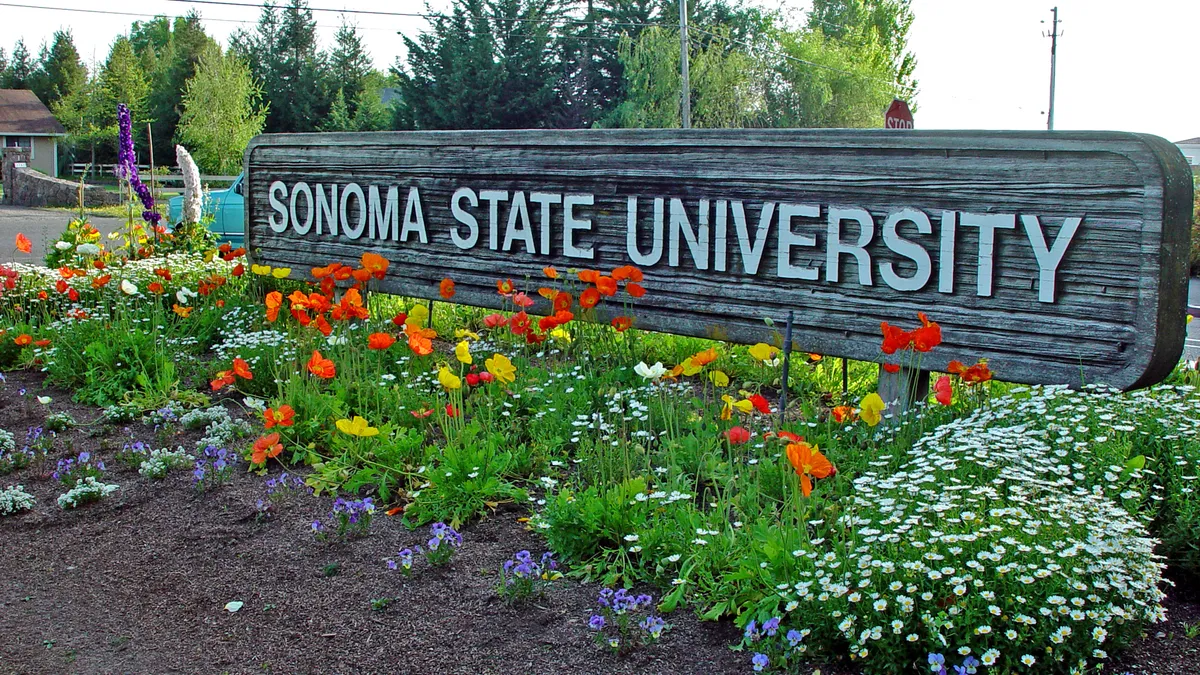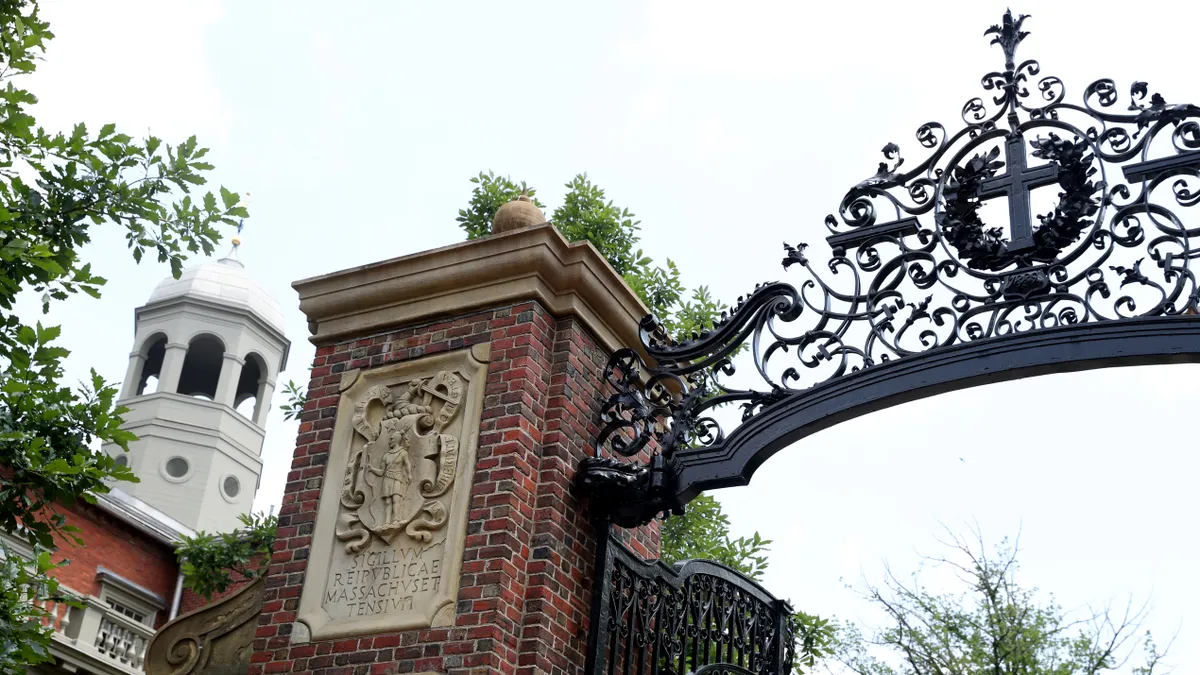The U.S. Supreme Court’s landmark ruling this summer against race-conscious admissions left the higher education world with many questions about how the decision would affect cornerstone practices.
For one, what would admissions look like at highly selective institutions? While these institutions account for just a small contingent of colleges, they are some of the few that had factored race into admissions. And they graduate students who often go on to work in the highest reaches of government and industry.
Answers are starting to emerge. At Cornell University, an internal task force last month issued a 40-page report with recommendations for how the Ivy League institution can alter its admissions work to help diversify its undergraduate population.
Suggestions include reaching out to high schools in underserved communities, beefing up resources in the university’s financial aid office to ensure it can deliver timely aid offers, and broadening use of software that Cornell relies on for tracking recruitment and yield.
The task force, which included administrators and professors, met weekly for six months to devise recommendations. They parsed through the university’s enrollment data, interviewed admissions and financial aid staff, and surveyed faculty and student organizations.
In a statement, Cornell said it had begun to implement some of the recommendations, specifically by adding a question to the Common Application. A university spokesperson last month declined to further comment on which recommendations it would adopt.
What was the task force’s mission?
Cornell President Martha Pollack established the task force in November 2022, months ahead of the high court’s decision in June striking down race-conscious admissions at Harvard University and University of North Carolina at Chapel Hill.
Her administration asked task members to consider what applicant characteristics Cornell should look for “that furthers the university’s mission and yields the educational benefits of a diverse student body.”
University officials have said that diversity is critical to Cornell. In fall 2022, 33% of Cornell’s students were White, 23% were Asian, 15% were Hispanic/Latino, and 7% were Black or African American.
Highly selective institutions, including Cornell, have attracted criticism for not enrolling more racially diverse or otherwise underrepresented students, such as those from low-income families.
Federal data shows in fall 2022 about 18% of Cornell’s student body received Pell Grants, which are often used as a proxy for low- or moderate-income status. Recent research found Cornell and the rest of the Ivy League could bolster their share of Pell students by 5% with modest effort.
University officials appear to agree they should open Cornell’s doors wider.
“To succeed in our academic mission, we need to be thoughtful and deliberate in ensuring that we are always a place where ‘any person’ is welcome,” Pollack said in a statement on the release of the task force’s report.
What are the recommendations?
Some of the task force’s suggestions echo advice the Biden administration has given colleges in the wake of the Supreme Court decision.
For instance, the U.S. Department of Education has emphasized that colleges that relied on race-conscious policies can broaden outreach to communities where historically marginalized students are plentiful.
This outreach won’t run afoul of the ruling. While the Supreme Court decision prohibited use of race in admissions, it doesn’t block colleges from picking which high schools they visit, so long as they don’t prioritize certain students because of their race.
At Cornell, about 80% of students graduated from one of 1,450 “feeder” K-12 high schools, the report states. These are K-12 schools where Cornell received 30 or more applications for fall admission from 2020 to 2022 — and they tend to enroll some of the wealthiest students.
Cornell should identify and work with the non-feeder high schools whose students typically don’t apply to the university, per the report.
“The hope is that once a few students enroll from high schools that have traditionally not sent students to Cornell, other students in these high schools will become more likely to consider applying to Cornell,” the report states.
It suggested the university start with high schools close to it in New York, and then “extend the base nationally over time.”
The institution could also work with community organizations that help marginalized students. And it could rely on various data sets that detail where low-income students attend high school, including some the federal government publishes.
Other efforts Cornell could take
Cornell could widen its K-12 pipeline by being more visible to middle and early high school students, according to the report.
To do so, task force members envisioned two marketing campaigns. One would involve mailers directed at middle and junior high schools where students normally wouldn’t deem Cornell an option. The other would target middle and junior high schools that are “attached to high schools that are partnering or associated with each college and school at Cornell.”
These kinds of efforts would teach students early about the general process of applying to colleges, including the intricacies of financial aid — and it would “inspire students to consider applying to places like Cornell, which they might otherwise assume to be out of reach,” it states.
Several of the task force’s recommendations revolved around financial aid, a notoriously burdensome process for students and families. The group suggested the Ivy League institution invest in and simplify its financial aid processes.
Delivering a timely financial aid offer can be key in diversifying Cornell’s student body, the report states.
Admitted students to any college — not just Cornell — may decide on a college based on how much financial aid they receive. If Cornell’s offer comes far after their acceptance letter, students may have already defaulted to other options.
A “significant, rapid infusion of resources is desperately needed” so Cornell’s Financial Aid and Student Employment office can send award offers out at the same time as acceptances, the report states.
That funding wouldn’t just provide more staffing but also upgrades to outdated technology, the report states. And Cornell should develop processes for regularly reviewing and updating financial aid packages.
One possibility is that Cornell could broaden use of Slate, software used to automate large chunks of the admissions process, including by tracking how many admitted students actually enroll. It can also send mass communications, like text messages, to prospective applicants.
More than 1,700 colleges work with Slate.
For Cornell, the software has untapped potential, the report states, arguing the university is “only using 10% of Slate’s capacity.”
University staff who work with Slate are using it to develop admissions structures for two graduate campuses, Cornell Tech and Weill Cornell Medicine. This leaves little room for Cornell to capitalize on it in undergraduate admissions, the report states.
Cornell has historically limited access to Slate to mitigate risk, the report states.
“As soon as bandwidth allows, the Slate team should provide opportunities for college officers to be trained on safe Slate use and access to Slate tools and apply their specialized expertise to manipulate data to engage in more nuanced recruiting, selection, and yield activities,” it states.





















